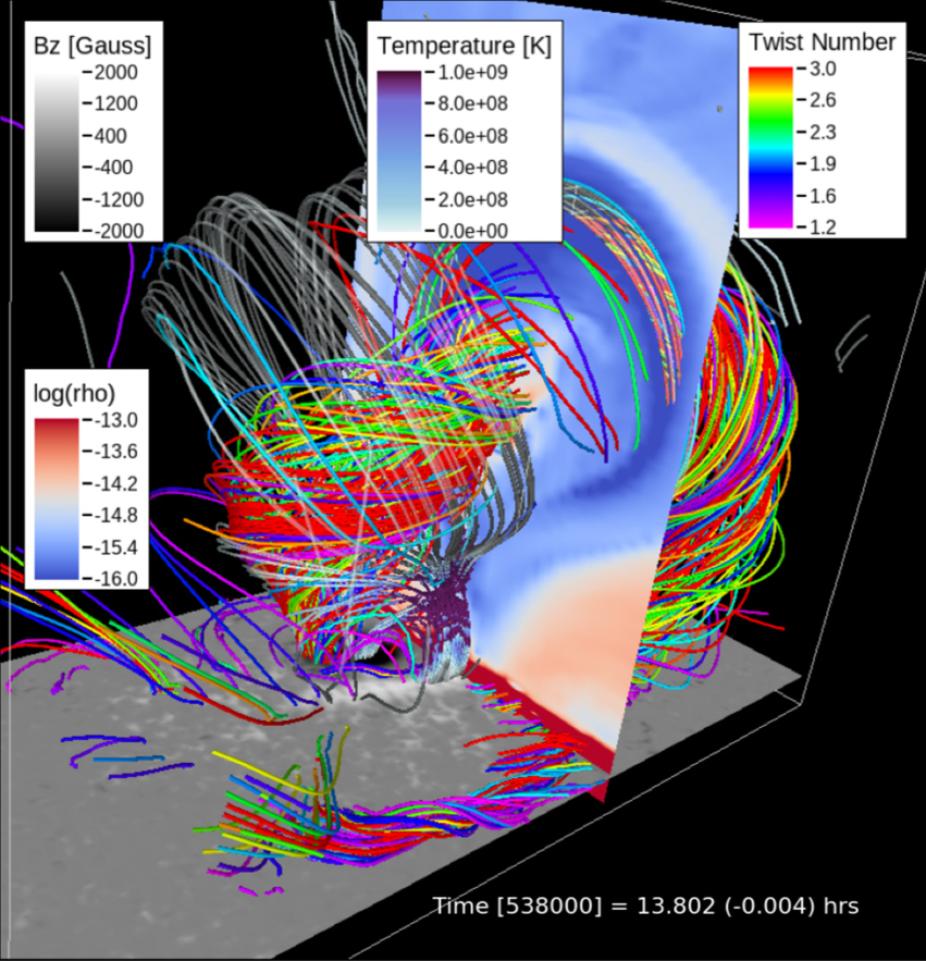
Simulation snapshot showing the magnetic field configuration 14 seconds before the peak of the flare.
The Astrophysical Journal: This publication presents a new simulation setup using the MURaM radiative MHD code that allows the study of the formation of collisional polarity inversion lines (cPILs) in the photosphere and the coronal response including flares. In this scheme, we start with a bipolar sunspot configuration and set the spots on collision course by imposing the appropriate velocity field at the footpoints in the subphotospheric boundary. We produce different setups with the same initial spot separation by varying physical parameters such as the collision speed and minimum collision distance. While all setups lead to the formation of an EUV and X-ray sigmoid structure, only the cases with a close passing of the spots cause flares and mass eruptions. The energy release is in the 1–2 erg range, putting the simulated flares into the upper C-class to lower M-class range of GOES X-ray 1–8 Å flux. While the setup with the more distant passing of the spots does not lead to a flare, the corona is nonetheless substantially heated, suggesting noneruptive energy-release mechanisms. We focus our discussion on two particular setups that differ in spot coherence and resulting cPIL length persistence. We find different timings in the transition from a sheared magnetic arcade to magnetic flux rope (MFR); the setup with a large length but shorter duration cPIL produces a MFR during the eruption, while the MFR is preexisting in the setup with a large length and longer duration cPIL. While both result in flares of comparable strength and the eruption of a coronal mass ejection, the setup with preexisting MFR (and embedded filament) leads to an MFR eruption with a larger mass content.
See NOVA highlight
Citation
“Comprehensive Radiative MHD Simulations of Eruptive Flares Above Collisional Polarity Inversion Lines,” Matthias Rempel et al 2023 ApJ 955 105. doi:10.3847/1538-4357/aced4d